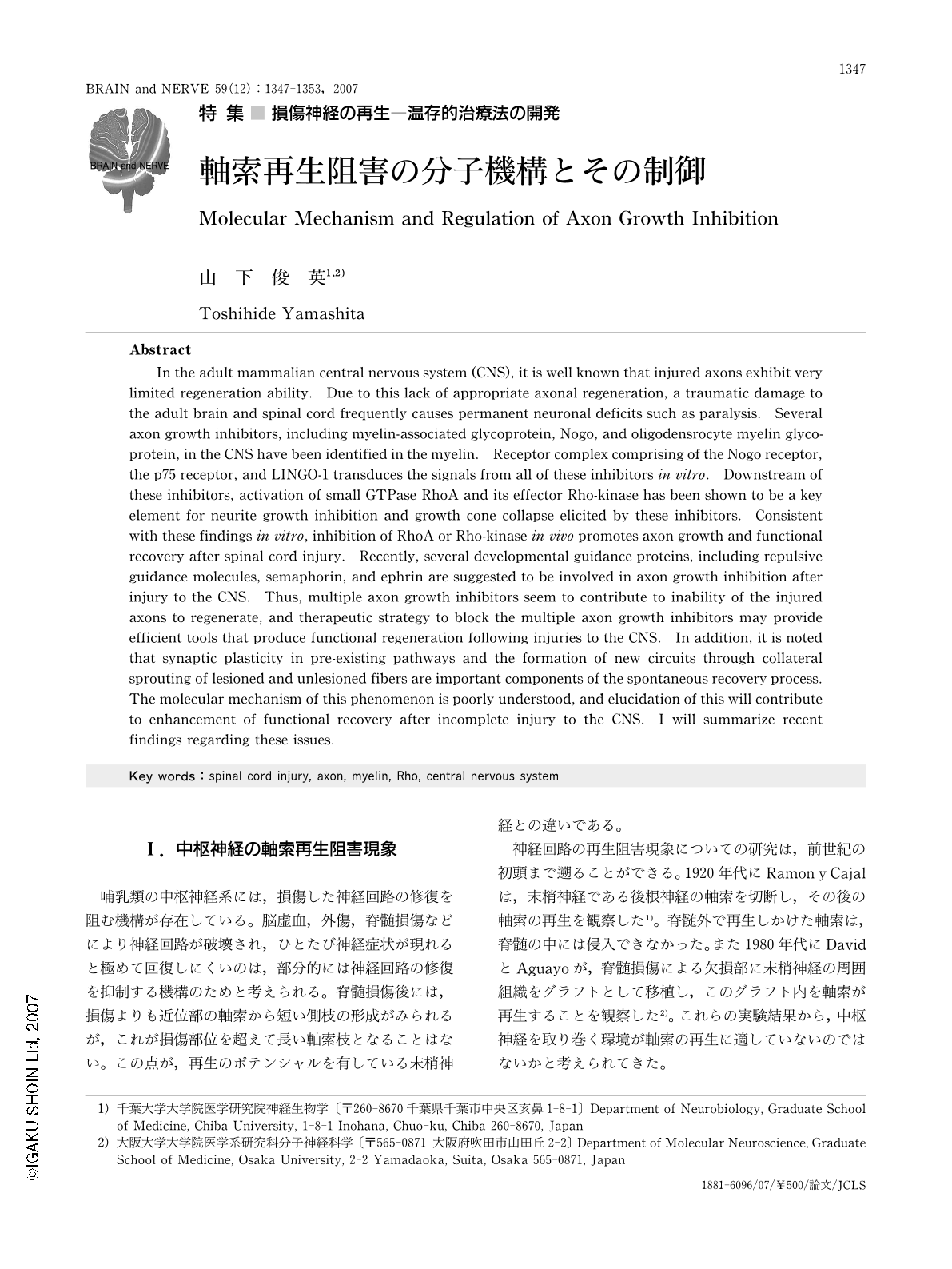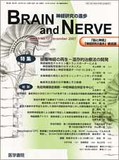Japanese
English
- 有料閲覧
- Abstract 文献概要
- 1ページ目 Look Inside
- 参考文献 Reference
Ⅰ.中枢神経の軸索再生阻害現象
哺乳類の中枢神経系には,損傷した神経回路の修復を阻む機構が存在している。脳虚血,外傷,脊髄損傷などにより神経回路が破壊され,ひとたび神経症状が現れると極めて回復しにくいのは,部分的には神経回路の修復を抑制する機構のためと考えられる。脊髄損傷後には,損傷よりも近位部の軸索から短い側枝の形成がみられるが,これが損傷部位を超えて長い軸索枝となることはない。この点が,再生のポテンシャルを有している末梢神経との違いである。
神経回路の再生阻害現象についての研究は,前世紀の初頭まで遡ることができる。1920年代にRamon y Cajalは,末梢神経である後根神経の軸索を切断し,その後の軸索の再生を観察した1)。脊髄外で再生しかけた軸索は,脊髄の中には侵入できなかった。また1980年代にDavidとAguayoが,脊髄損傷による欠損部に末梢神経の周囲組織をグラフトとして移植し,このグラフト内を軸索が再生することを観察した2)。これらの実験結果から,中枢神経を取り巻く環境が軸索の再生に適していないのではないかと考えられてきた。
Abstract
In the adult mammalian central nervous system (CNS), it is well known that injured axons exhibit very limited regeneration ability. Due to this lack of appropriate axonal regeneration, a traumatic damage to the adult brain and spinal cord frequently causes permanent neuronal deficits such as paralysis. Several axon growth inhibitors, including myelin-associated glycoprotein, Nogo, and oligodensrocyte myelin glycoprotein, in the CNS have been identified in the myelin. Receptor complex comprising of the Nogo receptor, the p75 receptor, and LINGO-1 transduces the signals from all of these inhibitors in vitro. Downstream of these inhibitors, activation of small GTPase RhoA and its effector Rho-kinase has been shown to be a key element for neurite growth inhibition and growth cone collapse elicited by these inhibitors. Consistent with these findings in vitro, inhibition of RhoA or Rho-kinase in vivo promotes axon growth and functional recovery after spinal cord injury. Recently, several developmental guidance proteins, including repulsive guidance molecules, semaphorin, and ephrin are suggested to be involved in axon growth inhibition after injury to the CNS. Thus, multiple axon growth inhibitors seem to contribute to inability of the injured axons to regenerate, and therapeutic strategy to block the multiple axon growth inhibitors may provide efficient tools that produce functional regeneration following injuries to the CNS. In addition, it is noted that synaptic plasticity in pre-existing pathways and the formation of new circuits through collateral sprouting of lesioned and unlesioned fibers are important components of the spontaneous recovery process. The molecular mechanism of this phenomenon is poorly understood, and elucidation of this will contribute to enhancement of functional recovery after incomplete injury to the CNS. I will summarize recent findings regarding these issues.

Copyright © 2007, Igaku-Shoin Ltd. All rights reserved.


